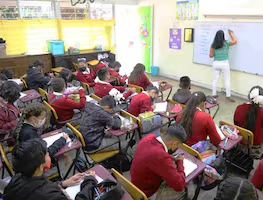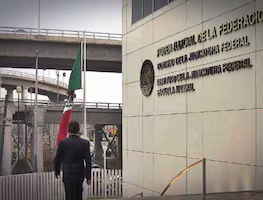Más Información

El primer megapuente de 2025 se acerca; ¿cuándo inicia y qué estudiantes tendrán descanso de 4 días?

Sheinbaum reitera protección a maíz mexicano; iniciativa enviada al Congreso rechaza siembra de trangénico

SIPINNA se suma a estrategia “México te abraza”; presenta recomendaciones para proteger niñez y adolescencia migrante

CEPL, en espera de orden del Tribunal Electoral; busca asumir proceso interrumpido del Comité del Poder Judicial

Tras sanciones de Trump a Colombia, Sheinbaum dice que hay que respetar a todos los países; “me tengo que informar bien para poder opinar”
Millions of Mexicans are, unfortunately, used to living a climate of insecurity , as the government or the police corporations haven't been able to modify this scenario through the years. It's society who has had to modify their everyday habits to try not to become just another figure in the national crime rates .
The National Statistics and Geography Institute (INEGI) released its 22nd National Urban Public Security Survey (ENSU) ; which it releases every three months. Although its general results show a slightly decreasing trend in the insecurity perception : 73.7% in December, compared to 17.9% in September. Nevertheless, there are few changes in the cities where the population has the highest perception of insecurity .
In the results of the most recent surveys, there are five places that always appear as the locations with the highest percentage of people over 18 years old, who consider living in their city is insecure : Ecatepec, Reynosa, Chilpancingo, Coatzacoalcos, and Villahermosa . Over 90% of the interviewees claimed to feel unsafe .
What measures have been implemented to revert the situation? Very little or nothing has been done if you analyze the latest survey results . Trimester after trimester, the fear among the inhabitants of these locations is repeated. Where is the coordination between the three government levels , in order to offer a different scenario?
Something similar takes place in Mexico City . According to the website Mexico City's Open Data , for three years in a row, from 2016 to 2018, six neighborhoods have been named as the most insecure. This isn't a perception , this is hard data . These areas in Mexico City lead the number of intentional homicide, extortion, and theft .
In theory, the Inegi' s endeavor, as well as the concentration of official numbers , should be useful to learn the country's reality and to adopt security policies that solve specific issues or tendencies.
Nevertheless, in the locations mentioned, the climate of insecurity hasn't changed. Until now, everything indicates that polls and crime indexes are only useful for society to realize that the authorities can't or won't manage the emergency and improve the population's quality of life and that security plays an important role.
gm






